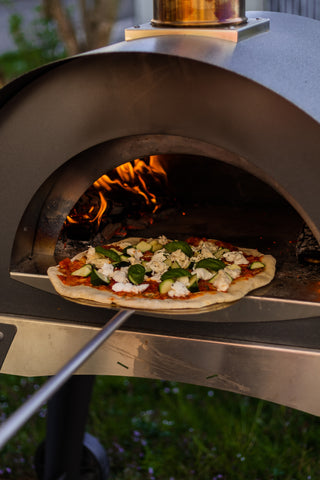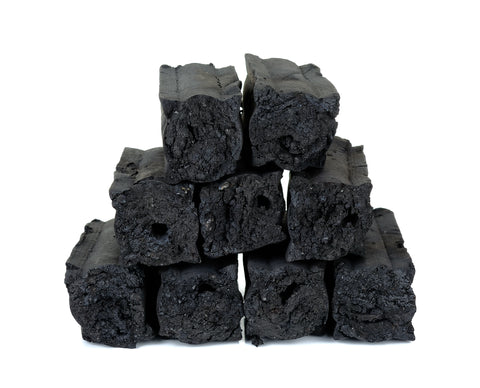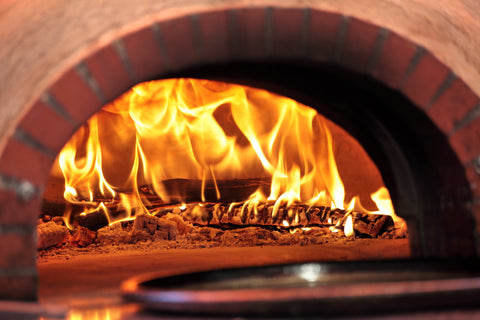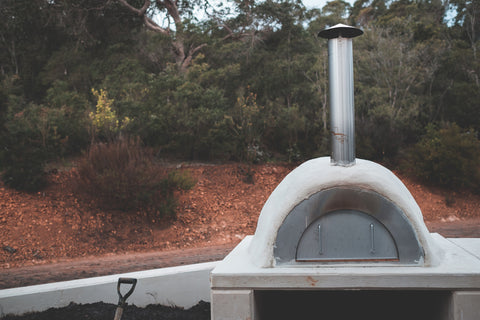So, you wanna make your own pizza in an authentic charcoal pizza oven? Cool! If pizza is your go-to fave meal for every occasion, investing in a pizza oven is wise. However, picking up the right fuel for your oven is extremely important to get that incredibly perfect flavor, texture, and taste in your pizzas.

Photo by Kajetan Sumila / Unsplash
Anthracite is arguably the best charcoal that one can use for the pizza oven. Its significant features like more heat, less smoke, clean burn, and fewer impurities make it a sought-after choice for almost all pizza ovens.
Choosing suitable charcoal is crucial as it can largely enhance the flavor and taste of your final dish. You really don’t want to make mistakes here. With a foolproof recipe and the right fuel choice, you are sure to create many successful pizza stories.
Now, let’s walk down together and examine how to perfect the art of making pizzas at home as we answer these commonly asked questions and go through some dos and don’ts.
- Why should we use charcoal for a pizza oven?
Burning charcoal yields a very high temperature of about 800-1000℉, which cooks your pizza in a jiffy. The charcoal creates an excellent heat base for pizza cooking which helps to super quickly build the internal temperature of the pizza oven. Most importantly, it maintains the high heat effectively for a longer time. The result is your pizza is well cooked with nice toasty outside and softly cooked inside, with absolute ease and in no time.
- What can you use instead of anthracite charcoal for your pizza oven?
If you don’t want to buy the expensive anthracite, your next best option of charcoal for your pizza oven is lump hardwood which gives a decent burn and low ash residue.

Photo by khumthongonline@gmail.com / Depositphotos
- How to use charcoal in a pizza oven?
First and foremost, load the charcoal into the fuel tray of your pizza oven. Then, with the help of wood wool, light the fire. Ensure there is proper air circulation to start and keep the fire going. Once the charcoal turns blazing red and hot and the desired high temperature is reached, add some dry hardwood or fruitwood and wait till it catches fire.
When the wood is lit well and blazing, pop in your pizza with its favorite toppings with the help of a pizza peel into the oven, right next to the flame. Use your pizza peel to turn it around a few times after brief intervals, so your pizza is cooked well on all sides. It may seem slightly burnt, but it is perfectly done.
Remove your pizza and load your oven with your next pizza. Monitor the temperature and constantly replenish the oven with wood and charcoal to keep the flame going.
You have officially made your own pizza in just a matter of 2-3 minutes.
- What is the best fuel for a pizza oven?
Charcoal-Hardwood Combo: The best fuel for a pizza oven is a combination of high-quality charcoal and kiln-dried hardwood. The high quality charcoal burns with low smoke, producing high heat and giving a nice clean burn. Once the charcoal turns into live coals, top up the coal with untreated or kiln-dried wood and wait until it ignites. When the rolling fire breaks out, place your pizza inside the oven.
Wood: When you source your fuel as only wood, it takes quite a bit of time to reach the very high temperature of 800℉ and above.
Start early. Arrange the wood in the oven and light them up. You will find that with just the wood, your wait is considerably longer, but it is not impossible to solely use wood as fuel. If you only have wood in hand and don’t have charcoal, you are still good to go!
Gas: When your fuel is gas, it is likely to heat up the top and middle parts of the oven first. The base of the oven heats up only later. So, when gas is your only fuel choice, it takes time to heat up the bottom of the oven and retain the temperature.
Also, your pizza will lack the smoky flavor that everyone desires. This is pretty much the only difference between wood-fired and gas-fired pizza ovens.

Photo by jhstudio / Depositphotos
- What kind of bricks do you use for a pizza oven?
Pressed Red Bricks: These traditionally used bricks were created to handle very high temperatures and were widely used in most kitchens for building ovens for a very long time.
The only problem is they are not designed to handle thermal shock, i.e., getting heated from cold to high temperatures over a short period of time. This typically happens in any oven, and when it happens, the bricks tend to crack slowly but surely. The crack advances, eventually causing the bricks to flake, crumble, and ultimately fall apart.
Fire Bricks: These bricks are not the most heat-resistant ones but are definitely designed to resist temperature variation. Your pizza oven is guaranteed to stand the test of time when built with this type of brick.
- Why does the domestic oven get damaged faster?
The domestic oven goes through more thermal shock than the commercial ones as the domestic ovens cool down completely between uses and need to be heated back to a very high temperature.
On the other hand, the commercial ovens don’t get a chance to cool down completely as they are fired every single day.
- Can concrete and concrete bricks be used to construct a pizza oven?

Photo by Lachlan Ross / Pexels
Concrete: Specially made premixed dry mortar with refractory properties is best suited for building ovens.
If this is unavailable, you can go for the regular concrete made of cement, sand, and gravel at a ratio of 1:2:4 that is blended to withstand high temperatures.
Concrete Bricks: These are not kiln fired but made by mixing cement, sand, and water. The resultant mixture is poured into bricks. So, the product is not treated with fire at any stage. This renders the concrete bricks unfit for utilization in a pizza oven which involves heating the oven to very high temperatures.

